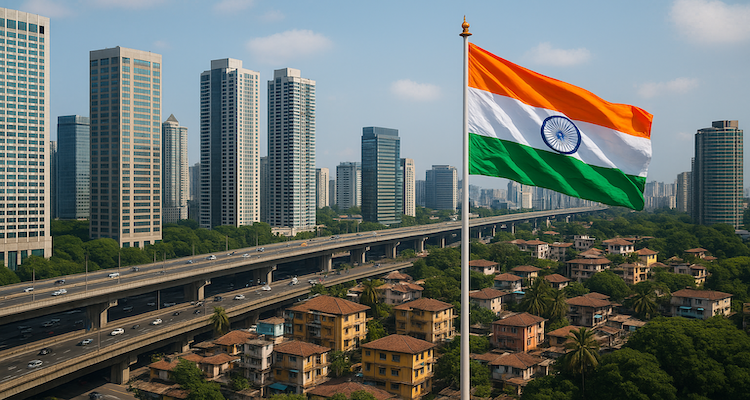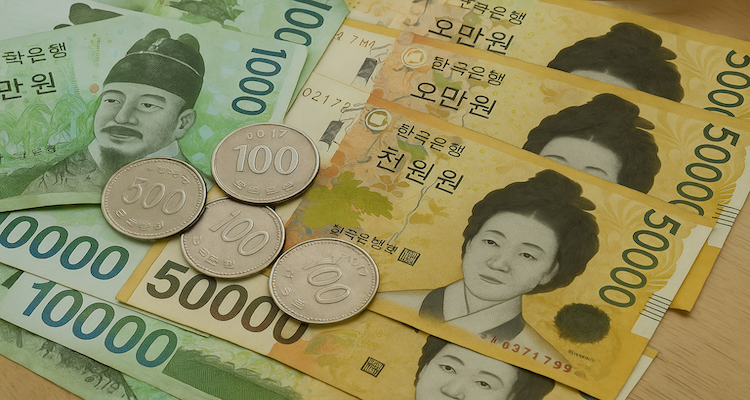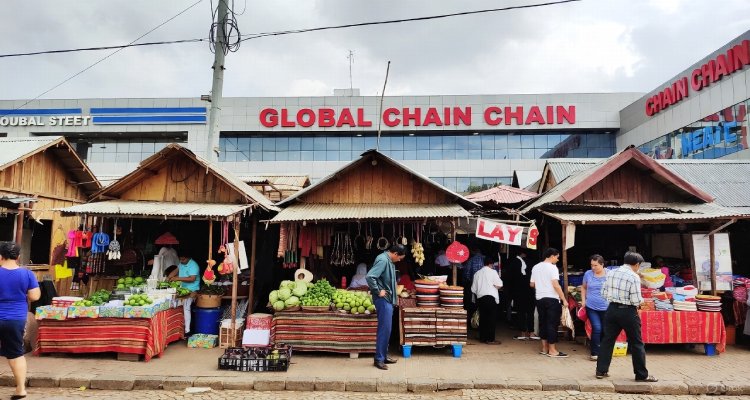Growth Momentum Slows but Stays Strong for India’s Economy
India’s economy is estimated to have grown 7.3% in July–September, supported by rural demand and government spending despite weak private investment and slowing momentum.
India’s Growth Holds Steady at 7.3%, but Cracks Emerge in Investment Pulse
India is on track to deliver another quarter of robust economic expansion, but the strength beneath the headline numbers appears increasingly uneven. A fresh Reuters poll suggests the economy grew 7.3% between July and September still among the fastest rates globally, even as private investment and urban demand lost momentum.
For much of the past two years, India has benefited from strong government-led capital expenditure and improving rural conditions. That dynamic persisted in the July–September period. Higher agricultural output helped revive consumption in rural regions, which make up a significant segment of the economy.
But not all engines fired at the same pace. Urban spending indicators softened, and private corporations remained cautious about deploying fresh capital amid global uncertainty. This contrast highlights a widening disparity between public-sector investment resilience and the private sector’s reluctance to scale up.
The performance also comes against the backdrop of heightened trade friction with the United States. In August, U.S. President Donald Trump raised tariffs on Indian goods to 50%, prompting foreign investors to withdraw roughly $16 billion from domestic equities so far this year. Yet India’s growth story has largely withstood that external pressure.
The Reuters survey of 61 economists, conducted from November 18 to 24, pegged India’s second-quarter GDP growth at 7.3% year-on-year slower than the previous quarter’s stronger-than-expected 7.8%. Forecasts in the poll ranged from 6% to 8.5%, underscoring the uncertainty clouding India’s underlying economic momentum.
A major factor propping up the real GDP figure was an unusually low deflator, the statistical tool that adjusts for inflation. With both wholesale and retail inflation cooling sharply, the deflator effect helped inflate the real growth number even as nominal GDP growth remained subdued.
Wholesale price inflation was nearly flat during the quarter, and consumer inflation averaged about 2%. By late autumn, inflation had dropped to below 0.5%, further softening the price environment.
Economists expect the official data to be released on Friday, November 28 at 1030 GMT.
Several economists caution against reading the headline number at face value.
Kaushik Das, India chief economist at Deutsche Bank, noted that while private consumption and central government capital expenditure continue to support growth, private-sector investment remains hamstrung by global uncertainty. In his words, investment from private firms is likely to “grow at a slower pace” as businesses weigh international risks more heavily.
Das also emphasized that the low deflator is playing an outsized role, artificially boosting the real GDP calculation. He expects nominal GDP growth, which doesn’t adjust for prices to stay weak even if real GDP appears solid on paper.
Rajni Thakur, chief economist at L&T Finance, expressed a similar view, saying soft inflation is likely to keep the deflator low for the rest of the fiscal year. That means the statistical lift to real GDP could persist into early 2026.
Gross value added (GVA), which tracks overall economic activity more directly by excluding commodity taxes, is estimated to have grown around 7.15%. Nominal GDP growth, meanwhile, likely slowed to 8.3% from 8.8% in the previous quarter.
The imbalance between real and nominal growth creates a complicated picture. On one hand, lower inflation offers relief to consumers and businesses. On the other, slow nominal growth limits government revenues and may affect fiscal planning.
Medium-term expectations look more restrained. Economists surveyed by Reuters expect GDP growth to ease to 6.8% in the current quarter and slip further to 6.3% by the end of the fiscal year ending March 2026. That would mark a gradual cooling from India’s recent streak of above-7% quarters.
Another factor shaping demand in the coming quarters is India’s revised Goods and Services Tax (GST) structure. The government implemented cuts to consumption-related GST rates starting September 22 as part of a broader overhaul aimed at boosting household purchasing power.
However, economists warn the impact may be diluted. ANZ economist Dhiraj Nim pointed out that Indian households are entering this period with historically high levels of debt. As a result, a portion of the savings generated from lower taxes may be diverted toward loan repayments rather than new spending.
The rural recovery remains one of the few bright spots, driven by improved monsoon distribution and better agricultural yields. Government spending especially on infrastructure has also helped buffer the slowdown in private investment.
Nevertheless, India’s growth trajectory is entering a more fragile phase. Global headwinds, high borrowing costs, and investor caution could shape economic behavior through early 2025. Private companies may wait for clearer signals on global demand before committing to large-scale capital expenditure.
Meanwhile, foreign investors continue to monitor U.S.–India trade relations closely. With tariffs still elevated and global risk appetite weakening, India’s equities market may remain vulnerable to capital outflows.
India’s economy continues to grow faster than most major economies, but the foundation of that growth is shifting. The July–September quarter delivered another strong headline number helped by rural demand, public spending, and a statistical boost from low inflation. Yet the cooling pace of private investment and expectations of slower growth suggest the road ahead may be more measured.
The coming months will reveal whether the country can sustain momentum as global uncertainties deepen. For now, India remains resilient, but the next phase of growth may require broader participation from the private sector and a revival in household financial capacity.
(Source: Reuters)
ALSO READ: BOK Poised to Hold Rates as Housing Heat and Weak Won Stir Caution










